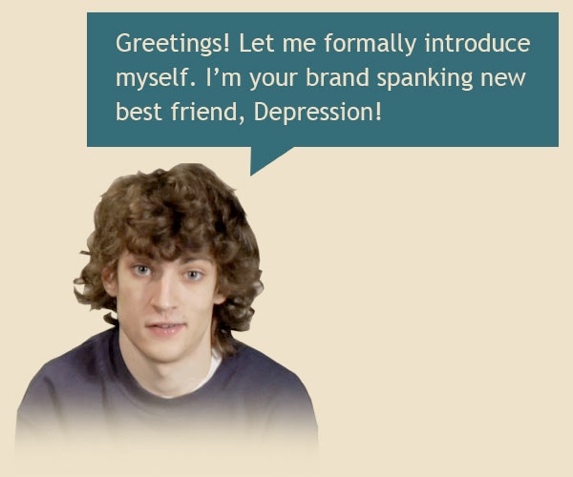Latest Public Service Radio Minute
Loss of EmploymentLoss of Employment, MP3, 1.3MB
Listen to or download all our PSAsSupport Our Work
Please donate so we can continue our work to reduce the stigma of psychiatric illness, encourage research, and support educational activities for behavioral health professionals and the public. Ways you can donate and help are on our Support and Donations page. Thank you!
More InfoLatest News Around the Web
Medical journal rejects call to retract vaccine study
Reuters (8/11, Erman, Rigby) reports the Annals of Internal Medicine “is rejecting a call from” the HHS Secretary “to retract a large Danish study that found that aluminum ingredients in vaccines do not increase health risks for children.” The study “analyzed nationwide registry data for more than 1.2 million children over more than two decades. It did not find evidence that exposure to aluminum in vaccines had caused an increased risk for autoimmune, atopic or allergic, or neurodevelopmental disorders.” In an interview with Reuters, Dr. Christine Laine, editor in chief of the Annals and a professor of medicine at Thomas Jefferson University, said, “I see no reason for retraction.”
Related Links:
— “Exclusive: Medical journal rejects Kennedy’s call for retraction of vaccine study,” Michael Erman and Jennifer Rigby , Reuters, August 11, 2025
Administration May Reclassify Marijuana As Less Dangerous Drug
USA Today (8/11, Wire) reports President Trump said during a Monday news conference that his Administration is considering reclassifying marijuana as a less dangerous drug “over the next few weeks.” USA Today notes that “45 states have legalized the use of marijuana for medicinal or recreational use,” but the federal government “still classifies it as a Schedule I drug,” which is “defined as highly dangerous, addictive and without medical use.” Reclassifying marijuana would mark the “biggest change in marijuana policy the federal government has taken since the drug was first outlawed, but it would not make recreational usage legal under federal law.”
Related Links:
— “Trump says he’s looking at reclassifying marijuana at federal level, “Sarah D. Wire , USA TODAY, August 11, 2025
Analysis Links Digital Technology Use To Reduced Risk Of Cognitive Impairment In Older Adults
The New York Times (8/9, Span) reported an analysis of 57 studies published in Nature Human Behaviour suggests that the use of everyday digital technology has been associated with reduced risk of cognitive impairment and dementia in older adults. Researchers observed that people over 50 “who used computers, smartphones, the internet or a mix did better on cognitive tests, with lower rates of cognitive impairment or dementia diagnoses, than those who avoided technology or used it less often.” Almost 90% of the studies analyzed “found that technology had a protective cognitive effect.” When researchers “accounted for health, education, socioeconomic status and other demographic variables, they still found significantly higher cognitive ability among older digital technology users.” Furthermore, digital technology “may also protect brain health by fostering social connections, known to help stave off cognitive decline.”
Related Links:
— The New York Times (requires login and subscription)
Review Finds Nearly One-Third Of Transgender, Nonbinary People Will Attempt Suicide At Least Once
Psychiatric News (8/8) reported an umbrella review published in JAMA Psychiatry found that “nearly one-third of transgender and nonbinary people will attempt suicide at least once in their lives.” The review “included 24 reviews and meta-analyses that analyzed 754 primary studies published between 1983 and 2022.” Researchers observed the “lifetime prevalence of suicidal ideation among transgender and nonbinary people was 50%, the lifetime prevalence of suicide attempt was 29%, and the lifetime prevalence of non-suicidal self-injury was 47%. Compared with cisgender people, trans and nonbinary people were about 3.5 times as likely to experience any of these above events.” The review also found that “trans and nonbinary people were more likely than cisgender individuals to experience an eating disorder, experience post-traumatic stress disorder, and be diagnosed with autism.”
Related Links:
— “Suicidal and Self-Harm Behaviors Common Among Transgender and Nonbinary People, Psychiatric News, August 8, 2025
Low And High Testosterone Levels Associated With PTSD Symptoms In Both Genders, Study Finds
Psychiatric News (8/7) reports a study found that in both males and females, both low and high “levels of testosterone may be a risk factor for future posttraumatic stress disorder (PTSD) symptoms,” while individuals in the middle had the lowest risk. For the study, male and female participants were “divided into 10 groups (deciles) based on total testosterone (TT) levels, with group one (lowest levels) serving as the reference.” Researchers observed “that relative to group one, all other groups had lower PTSD symptom scores, after adjusting for other variables. The scores exhibited a U-shaped pattern, with decile seven associated with the fewest PTSD symptoms in both males and females. Among both males and females, stronger associations between testosterone levels and future PTSD symptoms were seen in adults with a BMI of 30 or higher.” The study (8/6) was published in Translational Psychiatry.
Related Links:
— “Low and High Testosterone Associated With PTSD Symptoms in Males and Females, Psychiatric News , August 7, 2025
Foundation News
Nothing Found
It seems we can’t find what you’re looking for. Perhaps searching can help.

